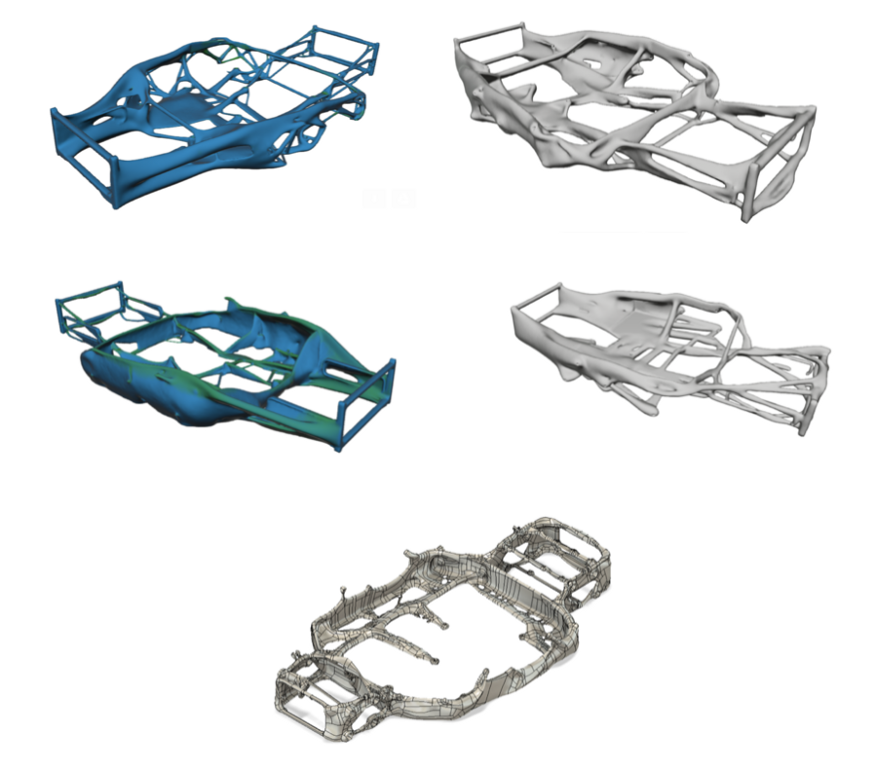In 2019, PIX turned to WAAM (wire arc additive manufacturing), then an emerging AM technology that used a combination of an electric arc as a heat source and a metal wire as feedstock. The result chassis was much lighter and easier to produce, thus reducing costs for PIX, whose goal is to provide cities with sustainable autonomous mobility.
The innovation’s most basic form is the application of robotic welding technology to additive manufacturing. WAAM trounces powder bed systems in manufacturing cost and size of parts. Once the initial investment is made in setting up the robot and the attendant welding equipment, the primary costs become raw material (welding wires) and electricity. Powder bed systems, on the other hand, are much more expensive with some metallic powders costing as much as gold for the same weight.
The size of parts made by powder-bed systems is limited by the size of bed. For WAAM, the size is limited by the reach of a robotic arm. The largest CNC and industrial robot systems are larger than the largest powder-bed systems. So, if one wants to print really big and low complexity parts, WAAM can do this quicker and many times cheaper compared to powder bed systems.
One of PIX’s goals is to make generative design structures using additive manufacturing, mainly for automotive application. PIX aims to develop a car chassis through generative design and manufacture through WAAM. The major challenge lies in incorporating WAAM constraints into generative design.
During the design of the chassis, several methods were implemented to tackle this challenge. This included performing structural optimization with tools like Autodesk Generative Design, PTC Frustum and Altair Inspire. This software performed structural optimization while considering manufacturing constraints for milling, casting, powder bed based AM, etc.
Manufacturing on Demand
Even with the help of this software, modeling algorithms limited generative design’s application to WAAM. PIX created two algorithmic solutions to this problem. It first developed its own generative design algorithm, which was inspired by the slime mold organism. It then manually modified the resulting generative design to ensure its suitability for WAAM.
PIX’s slime mold algorithm is created by emulating a single-celled organism. As the organism grows, it begins branching out, thus creating a dense network of connections. The organism optimizes its network by keeping only those branches that most efficiently connect to food sources. It prunes back the rest.
 This approach is akin to path planning. Researchers have shown that slime mold can solve complex maze-and-food problems. When the organism is put in a maze, the network changes its shape to connect two exits by the shortest path. The most famous example is the railway design in Tokyo. Engineers have spent more than 100 years optimizing the rail system, but the slime organism took just 26 hours to reach the same conclusion.
This approach is akin to path planning. Researchers have shown that slime mold can solve complex maze-and-food problems. When the organism is put in a maze, the network changes its shape to connect two exits by the shortest path. The most famous example is the railway design in Tokyo. Engineers have spent more than 100 years optimizing the rail system, but the slime organism took just 26 hours to reach the same conclusion.
PIX’s algorithm replicates this process when planning a digital model. It calculates the most fruitful paths and discards those that do not optimize parameters. The algorithm tries to minimize mass as well as maximum deformation of the structure. Because these two objectives (mass and deformation) compete with each other, it is up to the designer to decide which objective is more important.
Once a base model is obtained from the algorithm, human designers go to work optimizing the result for WAAM. This doubled design process ensures that the finish product is closest to the desired outcome prior to prototyping and testing.
The design experience that PIX obtained during this process is now being applied in larger scale to advance PIX’s autonomous driving mission. The lessons learnt during the process help PIX build a new generation of automotive structures that will have significantly less parts, weigh less and have the ability to be made through inexpensive and fast metallic 3D printing technologies, like WAAM. These innovations are necessary to revolutionize car manufacturing, which has not seen much change since Ford first introduced the assembly line about a hundred years ago.
* This article is reprinted from 3D Printing Media Network. If you are involved in infringement, please contact us to delete it.
Author: Adam Strömbergsson

Leave A Comment